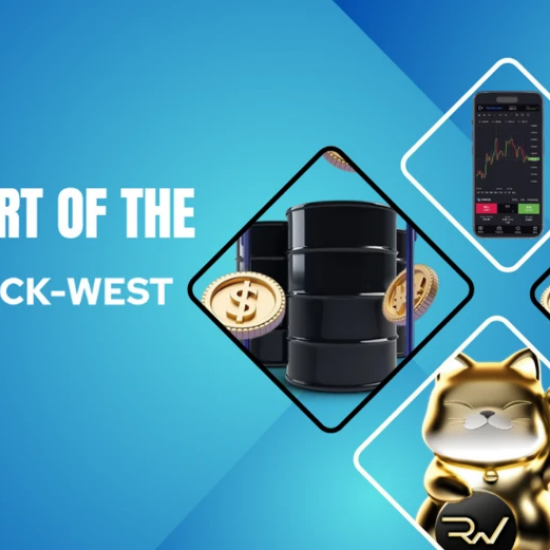European stocks and S&P futures rose modestly ahead of January US payrolls data, along with the dollar, while Asian shares dropped after China returned from a week-long holiday. Bonds slid, oil rose while the JGB intervened in the bond market to prevent a bond rout, in one of two major surprises during the Asian session.
As reported last night, having closed at 0.109% yesterday the 10y JGB yield touched an intraday high of 0.150% this morning – the highest in 12 months – despite the BoJ offering to buy back ¥450bn of 5-10y maturities in a scheduled operation, which equaled the amount bought a week ago. The quantity was clearly seen as too passive though in the context of breaking through what most think is the perceived upper limit of the BoJ’s level of comfort around the 0% 10y yield target. However after the market had tested their resolve the BoJ then made another move a couple of hours later in an unscheduled operation to buy back an unlimited amount of bonds again in the 5-10y bucket, at a fixed rate of 0.110%. The 10y yield has now fallen back. While that latter move has had a more obvious effect, it’s worth highlighting that the yield still remains above the BoJ’s perceived upper band, notwithstanding the fact that markets have been left a bit dazed and confused by all this. The Yen has also whipsawed and is currently -0.20% weaker.

That was not all: in the second unexpected Asian move, this morning China announced an unexpected tightening of policy when it raised rates on 7, 14 and 28-day reverse repos by 10bps to 2.35%, 2.50% and 2.65% respectively. That’s the first increase in the 28-day contracts since 2015 and since 2013 for the other two tenors. Keep in mind that this is the first working day following the New Year holiday in China, so it seems to be a decent statement of intent by the PBoC. Additionally, the SLF rate was increased to 3.1 percent from 2.75 percent. The implicit tightening sent Chinese stocks lower, with the Shanghai Composite closing down 0.6%, and accelerating the selloff in Chinese 10Y government futures.
While a set of well-received corporate results helped prevent the weakness from spilling over into European stocks, the focus now shifts to the U.S. labor market report.
All of which brings us to payrolls Friday, a fitting end to what has been a busy week. The current market consensus for today is 175k although the range between economists is a fairly lofty 140k to 238k. Remember that Wednesday’s ADP came in at a much better than expected 246k while the employment component of the ISM manufacturing also bounced 3.3pts to 56.1, so the whisper number might be a little higher than the where the consensus is. As always keep an eye on the other components of the report too. The market expects the unemployment rate to hold steady at 4.7% and average weekly earnings to rise +0.3% mom.
The Bloomberg’s Dollar Spot Index rose, paring a sixth weekly decline, its longest losing streak since 2010. Europe’s Stoxx 600 index advanced and the region’s bonds dropped, following moves in Treasuries. Britain’s pound dropped against most of its major peers after growth slowed in the service industry amid surging costs. As Bloomberg notes, central bank decisions have dominated the financial markets all week, as policy makers from Japan to the U.S. try to assess the impact of America’s new leadership on global growth. Investors are also looking for clues on economic strength amid a wave of corporate earnings. While signs point to increasing confidence that growth will accelerate, data have painted a murkier picture, highlighting the significance of Friday’s jobs report.
“The next hurdle for the USD to overcome is the Fed,” said analysts at Morgan Stanley, led by strategist Hans Redekker, in a note to clients, adding, however, that conditions for a resumption of the dollar to resume its rally have improved. Reiterations of continued monetary policy in Europe, the Bank of Japan’s commitment to control the JGB yield curve and weaker yuan fixings by the People’s Bank of China, are “three pluses” for the US dollar, Morgan Stanley said.
“Investors are really cautious, taking a defensive posture, as they wait and see what U.S. jobs data will show about the economy and the pace of rate increases,” said Jonathan Ravelas, chief market strategist at BDO Unibank Inc. “The direction of global interest rates is also a key element keeping investors at bay.”
European stocks rose 0.5 percent as of 10:51 a.m. in London, reversing the previous session’s losses. Only miners dropped, following lower-than-expected China macroeconomic data. Futures on the S&P 500 edged higher. The index has gained or retreated by less than 0.1 percent for five of the past six days, and is down 0.6 percent on the week.
Meanwhile, in commodities oil prices edged up on threat of U.S. issuing new Iran sanctions while comments by Russian energy minister Alexander Novak that oil producers had cut their output in accordance with a pact agreed in December also helped support prices. Brent crude futures were up 17 cents, or 0.3 percent, to $56.72 a barrel. Brent is set to gain more than 2 percent for the week. Front month U.S. West Texas Intermediate crude futures climbed 15 cents, or 0.3 percent, to $53.69 a barrel.
The yield on 10-year U.S. Treasuries rose one basis point to 2.48 percent. The yield on German bonds due in a decade also added one basis point to 0.43 percent.
* * *
Market Snapshot
- S&P 500 futures up 0.2% to 2280
- Stoxx 600 up 0.5% to 364
- MSCI Asia Pacific down 0.2% to 142
- US 10-yr yield up less than 1bp to 2.48%
- Dollar Index up 0.24% to 100.03
- WTI Crude futures up 0.3% to $53.69
- Brent Futures up 0.3% to $56.75
- Gold spot down 0.2% to $1,214
- Silver spot down 0.7% to $17.36
Top Global News
- Trump to Order Review of Dodd-Frank, Halt Obama Fiduciary Rule: plans executive action Friday to significantly scale back the regulatory system put in place in 2010
- America Movil Misses Estimates With Mexico Margins Pressured: Home market’s operating profit margin falls to 18% from 28%
- Visa Sticks to Forecast Despite Strong Dollar, Shares Rise: New CEO Al Kelly sees ‘good momentum in the business’
- Snap Files for IPO; 2016 Rev. $404.5m vs $58.7m y/y
- Nordstrom Says It’s Cutting Ivanka Trump Brand Due to Poor Sales: Cites the brand’s performance in making the decision
- Amazon Projects Spending That Concerns Investors Watching Profit: Company says earnings will shrink even as revenue soars
- Panasonic Falls as U.S. Authorities Investigate Avionics Unit: Panasonic also raises full-year profit and sales forecasts
- Snap Asks Non-Voting Investors to Focus on Vision, Not Losses: IPO investors only offered non-voting shares in company
- Amgen Cholesterol Drug Meets Goals; Profit Tops Estimates: Results of large study could unleash sales of pricey Repatha
- FireEye Falls After Disappointing Forecast, Executive Exits: Fourth-quarter sales were unchanged from a year earlier
- Daimler Reviewing Collaboration With Nissan at Mexico Auto Plant: Infiniti output set to start this year, Mercedes in 2018
- Escondida Strike Faces Delay as BHP Applies for Mediation: Request to labor authorities may add 5 days of negotiations
Asian markets were fractionally lower, following a subdued lead from as the region digested a miss on Chinese Caixin Manufacturing PMI and amid cautiousness ahead of NFP. This weighed on both the ASX 200 (-0.4%) and Nikkei 225 (Unch) with the latter choppy in reaction to BoJ-induced JPY fluctuations. Shanghai Comp. (-0.6%) and Hang Seng (-0.2%) traded negative on return of mainland participants who were greeted by the aforementioned miss on PMI data and after the PBoC raised rates for its reverse repo operations and Standing Lending Facility. 10yr JGBs whipsawed with initial pressure seen following a weak BoJ bond buying announcement of JPY 520BN vs. last Friday’s JPY 1.27TN total. However, 10yr JGBs then recovered after a late surprise by the BoJ to conduct a fixed-rate JGB purchase operation for unlimited amounts of 5-10yr JGBs, in which it offered to buy the benchmark 10yr at 0.11% and therefore effectively restricted further increases in yields.
Top Asian News
- China Tightens as Japan Keeps Easing as Monetary Policy Diverges: PBOC hikes money market costs, BOJ intervenes in bond market
- Jindal Said in Talks to Sell Power Plant for Over $1.5 Billion: Co. seeks to cut debt after eight straight quarters of losses
- GIC Investment Chief Sees ‘Structural’ Changes in Tech, Health: Sovereign fund has created two groups for tech, healthcare
- Mitsubishi UFJ Profit Unexpectedly Rises 17% on Bond Trading: Japan’s three biggest banks are on track to meet profit goals
- Honda Raises Operating Profit Forecast by 21% on Weaker Yen: Yen has weakened about 7% since Trump elected U.S. president
European indices are trading in the green with materials the only sector in the red after poor manufacturing data from China. Energies outperform after WTI and Brent crude prices hold up after a few days of gains. In terms of major movers this morning, Banco Popular shares fell in the wake of their pre-market earnings release. The Spanish bank posted losses of EUR 3.58b1n which led shares to fall 8% at the open. In fixed income markets supply is light today with only with the UK DMO coming to market with their usual Friday T-bill tender.
Top European News
- Banco Popular Posts $3.9 Billion Loss on Real Estate Purge: Troubled Spanish lender seeks to draw line under property bust
- Areva Agrees Equity Investments From Japan Nuclear Companies: France to subscribe to EU2.5b reserved capital increase
- Orange Seeks Africa Deals as Wireless Carrier Eyes Expansion: French wireless carrier ‘speaking to everyone,’ official says
- Goldman Sachs Sells $940 Million Stake in Denmark’s Dong: Goldman will still own a 7% stake in the Danish utility
- May Seeks to Ride Brexit Wave Targeting Historic By-Election Win: Conservatives are aiming for rare gain for a ruling party
- U.K. Services Growth Cools as Costs Dominate Companies’ Concerns: PMI index falls to 54.5 in Jan. from 56.2 in Dec.
In currencies, the usual pre US payrolls trade sees the USD meandering in some well worn ranges, with USD bulls still looking to find a base. Despite some glitches in the data series of late — including the Q4 GDP number this time last week — the market has also been trying to fight off comments from president Trump and his advisers (on currency devaluation), but today’s numbers could put some focus back on domestic led policy drivers, albeit with the Fed rate hike profile currently erring towards 2 for 2017. USD/JPY is showing signs of the strain more than anywhere else, and this may have contributed to a little more intent in EUR/USD, as sellers came in hard ahead of 1.0850 yesterday. Resilience coming in from the low 1.0700’s, with buyers pointing to the rise in inflation despite the ECB choosing to look through the energy led effects. Cable could come under attack once again if USD bulls look for a safer route, and this will have been enhanced by the UK services PMIs this morning, which saw the index falling more than expected from 56.5 to 54.5 vs 55.8 expected. EUR/GBP has tipped 0.8600, but is struggling to hold onto gains. Russia’s ruble pared an earlier loss and bonds retreated after the central bank left its key rate unchanged at 10 percent and said the potential for a cut in the first half of the year has diminished.
In commodities, China’s return has failed to produce the fresh bid in base metals as some were expecting, with softness in prices partly attributed to a modest bid in the USD. Zinc and Lead are showing the larger percentage losses on the day so far, while Copper found price resistance ahead of USD6,000p/t yesterday, extending the pull-back to just shy of USD5,8000. Nickel has also eased back despite the impact on mines in the Philippines from the environmental `moratorium’. Oil headed for a third weekly gain as OPEC reached about 60 percent of its output-cut target and the U.S. was said to be planning new sanctions on Iran after a missile test. West Texas Intermediate crude advanced 0.4 percent to $53.74 a barrel and Brent climbed to $56.78. Gold pared the biggest weekly gain since Jan. 13 as demand rebounded to a three-year high in 2016 as investor concerns over political issues including Brexit spurred demand for a haven. Bullion for immediate delivery slipped 0.2 percent to $1,213.17 an ounce, poised for a weekly increase of 1.9 percent. Industrial metals declined after after weaker-than-expected factory data and signs of tighter monetary policy in China, highlighting risks of demand slowing. Copper dropped 0.9 percent to $5,832.50 a metric ton and zinc lost 2.6 percent. Nickel fell 1.8 percent as companies in the Philippines pushed back on mine-closure orders that could restrict supply of the metal.
Looking at the day ahead, this morning in Europe it’ll be all eyes on the remaining January PMI’s where we’ll get the final revisions to services and composite readings for the Euro area, Germany and France, as well as a first look at the data for the UK and the periphery. Also due out this morning is the December retail sales numbers for the Euro area, which printed a disappointing -0.3% on expectations of a +0.3% rise. In the US it’ll be all eyes on the aforementioned January employment report and of course the nonfarm payrolls print. As well as that, the final services and composite PMI revisions will be made, while the ISM non-manufacturing reading for January and factory orders in December will also be out. Away from the data we’ll also hear from Chicago Fed President Evans this afternoon at 2.15pm GMT when he is due to speak on the US economy and policy. On the earnings front it’s fairly quiet with only 6 S&P 500 companies set to report.
* * *
US Event Calendar
- 8:30am: Change in Nonfarm Payrolls, Jan., est. 175k (prior 156k); Unemployment Rate, Jan., est. 4.7% (prior 4.7%)
- 9:15am: Fed’s Evans Speaks on Economy and Policy in Olympia Fields
- 9:45am: Markit US Services PMI, Jan. F (prior 55.1)
- 10am: ISM Non-Manufacturing Composite, Jan., est. 57.0 (prior 57.2)
- 10am: Factory Orders, Dec., est. 0.7% (prior -2.4%)
- 10am: Durable Goods Orders, Dec. F (prior -0.4%); Capital Goods Orders Non-Def Ex-Aircraft & Parts, Dec. F (prior 0.8%)
- 1pm: Baker Hughes rig count
US Government Docket:
- 9am: House to consider joint resolution to disapprove Bureau of Land Management rule on conservation, waste prevention and production subject to royalties
- 3pm: Woodrow Wilson Center discusses year ahead in environment and energy
DB’s Jim Reid concludes the overnight wrap
Welcome to payrolls Friday, a fitting end to what has been a busy week. Well we say its been busy, what with the world getting used to the ebbs and flows of a Trump Presidency and the subsequent need to keep our Twitter accounts within eyeshot, central bank meetings from the BoJ, Fed and BoE, European politics bubbling below the surface and the corporate reporting calendar kicking up a gear. That said, aside from some brief excitement on Monday, the reality is that we’re still hovering around similar low levels of volatility and markets appear to be no more convinced about the near-term direction relative to where we sat last week.
Indeed we thought it would be worth taking a quick snapshot of what markets have done this week. The most interesting price action has come in FX where Mr Trump’s jawboning about currencies has been a big factor. As a result we’ve seen the Dollar index trade in a high-to-low range range of 1.77%, the Yen trade in a 2.53% range and the Euro in a 1.96% range this week. However that is about the extent of the excitement. In rates 10y Treasury yields closed last night at 2.475% after closing at 2.485% last week, and have traded in a fairly unexciting 8bp range this week. Credit markets are much the same with CDX IG just 1.5bps wider this week (with a 2.5bp range) while iTraxx Main is 2bps wider over the week (in a 4bp range). What has been most remarkable though is the amazingly small day to day moves for US equities. Following the -0.60% loss on Monday the last three daily moves for the S&P 500 have been -0.09%, +0.03% and +0.06%. In fact if we go back to the last six trading days, the index has closed either up or down by less than 0.10% on five of those six days. The current level of the VIX (11.93) is also not too far off the two and a half year low on Friday of 10.58.
If the overnight session in Asia is anything to go by though, then we might be in for a livelier day today. The first thing to note is the latest moves in JGB’s. Having closed at 0.109% yesterday the 10y yield touched an intraday high of 0.150% this morning – the highest in 12 months – despite the BoJ offering to buy back ¥450bn of 5-10y maturities in a scheduled operation, which equalled the quantum bought a week ago. The quantity was clearly seen as too passive though in the context of breaking through what most think is the perceived upper limit of the BoJ’s level of comfort around the 0% 10y yield target. However after the market had tested their resolve the BoJ then made another move a couple of hours later in an unscheduled operation to buy back an unlimited amount of bonds again in the 5-10y bucket, at a fixed rate of 0.110%. The 10y yield has now fallen back. While that latter move has had a more obvious effect, it’s worth highlighting that the yield still remains above the BoJ’s perceived upper band, notwithstanding the fact that markets have been left a bit dazed and confused by all this. The Yen has also whipsawed and is currently -0.20% weaker as we type. The Nikkei is up +0.36%. A fascinating few hours.
That’s not all though as this morning China also announced that they are raising rates on 7, 14 and 28-day reverse repos by 10bps to 2.35%, 2.50% and 2.65% respectively. That’s the first increase in the 28-day contracts since 2015 and since 2013 for the other two tenors. Keep in mind that this is the first working day following the New Year holiday in China, so it seems to be a decent statement of intent by the PBoC. Bourses in China have opened lower with the Shanghai Comp and CSI 300 currently -0.57% and -0.61% respectively.
Away from that the ASX (-0.47%) and Kospi (-0.18%) are also down, while US equity index futures are also in the red. There’s also been some Trump news to highlight with the announcement last night that the new administration is to impose fresh sanctions on Iran, possibly as soon as today. This comes after Trump warned on Wednesday that he was putting Iran “on notice” for recent military action and also for supporting various military groups. The WSJ is suggesting that the sanctions are unrelated to Iran’s nuclear program and so won’t violate the nuclear deal forged under Obama’s administration.
Back to payrolls. The current market consensus for today is 180k although the range between economists is a fairly lofty 140k to 238k. Our US economists have a below-market 150k forecast which they note is consistent with real GDP growth near 2%. Remember that Wednesday’s ADP came in at a much better than expected 246k while the employment component of the ISM manufacturing also bounced 3.3pts to 56.1, so the whisper number might be a little higher than the where the consensus is. As always keep an eye on the other components of the report too. The market expects the unemployment rate to hold steady at 4.7% and average weekly earnings to rise +0.3% mom.
Moving on. While there wasn’t a huge amount to report from markets in the US yesterday, it was a bit of a weaker day for European equities where the Stoxx 600 fell -0.34%. More eye catching were the moves in rates though. 10y Bund yields finished 4.3bps lower at 0.420% and yields in the periphery were anywhere from 4bps to 10bps lower. That may have reflected some of the commentary out of the ECB yesterday. Board member Praet said that the firming recovery in Europe is “not yet sufficiently robust to ensure a self sustained convergence of inflation rates to levels closer to 2%”.
The bigger impact though was perhaps the BoE. As expected there were no surprises on the policy front. DB’s Mark Wall highlighted that the key change to the BoE’s latest assessment of the economy was not that GDP was revised up, which was more predictable – the forecast for GDP growth in 2017 is now 2.0%, up from 1.4% in November and 0.8% in August – but that the supply side potential of the economy was revised up too. The impact of the latter effectively neutralized the ramifications on inflation from the former. More specifically, the BoE has reduced its view on the natural rate of unemployment to 4.5% from 5.0%. Overall Mark viewed the neutral tone in the BoE’s press statement, MPC minutes and Inflation Report press conference as more dovish than he had expected. In his view the hurdle to changing the policy stance, or signalling a potential change, is high. There remains a fear also that Brexit could yet hurt the economy more substantially and that the costs of a policy error are asymmetric.
Staying in Europe, yesterday DB’s Marco Stringa published an update on the political situation in Catalonia. He highlights that Catalonia’s independence quest is likely to return to the headlines over the next few months. He believes that the call for an independence referendum there is not just posturing to get a better fiscal deal. Indeed it is his long-held view that the fragile Catalan government can survive only if it is seen continuing with the plan to hold an independence referendum. The President of Catalonia has said that the independence referendum will take place at the latest in September 2017 but that according to Spanish media, the Catalan government is considering bring it forward to early summer. In Marco’s central case scenario, he does not think that the current Catalan government has enough political support to implement a unilateral secession from Spain even if the hypothetical independence referendum takes place. The main risk in the short term is increasing tensions that play into the hands of the pro-independence movement.
Before we look at today’s calendar, in terms of yesterday’s data in the US, non-farm labour productivity rose a slightly stronger than expected +1.3% qoq annualised (vs. +1.0%) in Q4. Unit labour costs rose less than expected in the same quarter (+1.7% vs. +1.9% expected). Finally initial jobless claims decreased 14k to 246k last week. The only other data to note yesterday was the Euro area PPI reading which printed at +0.7% mom.
Looking at the day ahead, this morning in Europe it’ll be all eyes on the remaining January PMI’s where we’ll get the final revisions to services and composite readings for the Euro area, Germany and France, as well as a first look at the data for the UK and the periphery. Also due out this morning is the December retail sales numbers for the Euro area. In the US this afternoon it’ll be all eyes on the aforementioned January employment report and of course the nonfarm payrolls print. As well as that, the final services and composite PMI revisions will be made, while the ISM non-manufacturing reading for January and factory orders in December will also be out. Away from the data we’ll also hear from Chicago Fed President Evans this afternoon at 2.15pm GMT when he is due to speak on the US economy and policy. On the earnings front it’s fairly quiet with only 6 S&P 500 companies set to report. The only other thing to keep an eye on today is a meeting between EU leaders in Malta this morning where discussion topics are set to include migration and the political future of the bloc. Before we sign off, it’s worth noting that this Sunday President Trump is due to take part in a televised interview with Fox News prior to the Super Bowl at 9pm GMT/4pm EST. So keep an eye on that one.









